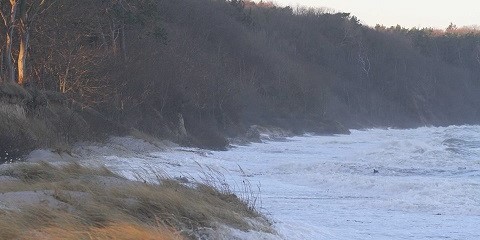

STB - Shallow Water Processes and Transitions
to the Baltic Scale
Coastal oceans worldwide consist of distinct but still tightly connected ecosystems such as estuaries, shallow water habitats, tidal wetlands and the continental shelf. For the Baltic Sea a definition of the coastal zone is based on the extend of interaction between the waters and sediments (app. 0-10m depth) where mixing, waves and currents still stir sediments into the upper light-flooded waters. Despite their essential role in the sequestration of material from land and shaping a unique environment, the shallow coastal waters are neither integrated into our understanding of processes nor in physical-biogeochemical modeling, although they experience strong impacts from the changing climate and human activities. Consequently, the generation of a profound process understanding in these waters remains one of the main challenges for the IOW in the future.
Open questions and hypotheses addressed
- The functioning of entire marginal seas like the Baltic Sea is determined by coastal processes and vice versa.
- Sediments and suspended matter are closely linked to hydrodynamic forcing. Thus, material transport along and across the coastal interface will be modulated by extreme conditions and direct anthropogenic activities.
- Frequent alterations in the environmental conditions (temperature, nutrient concentrations, sediment allocation and more) have a strong impact on the physiology and performance of microorganisms, microbial rates, and are often associated with community changes.
- Direct human interference such as dredging of navigational channels, trawling, construction of offshore infrastructure and coastal protection impact natural processes of the coastal ecosystem in different ways.
- The coastal water and element cycle in the critical coastal transition zone are impacted by both, sea level rise and human resourcing, like drinking water production and irrigation in agricultural areas.
- A holistic understanding of coastal zone processes and dynamics enables the improvement of measures in planning and management.
- Climate change affects the entire ocean system via the impact on the particularly vulnerable coastal zone.
- Communicating research results relevant to coastal environments contributes to stakeholder engagement and a wider consensus on visions for sustainable future development.